
India's armed services are stepping up efforts to rescue thousands of people stranded by flooding in southern Kerala state that has killed 324 people.
Hundreds of troops, and dozens of boats and helicopters are helping to evacuate people from what officials say is the worst flooding there in a century.
Many people are still believed to be trapped on rooftops of flooded homes.
Prime Minister Narendra Modi earlier flew over the worst-hit sites and met state officials to discuss the crisis.
There are fears the situation may get worse with more heavy rain and strong winds forecast over the weekend.
- In pictures: Kerala floods
- India floods: 'I'll have nothing if I leave my house'
- Saving flood water to get through the droughts
Nearly 1,000 people have died in total since India's rainy season began in June.
How bad is it in Kerala?
Kerala's chief minister, Pinarayi Vijayan, says the flooding is the worst the state has seen in 100 years.
In a tweet, he said that more than 314,000 people were now living in more than 2,000 emergency relief camps set up in the area.
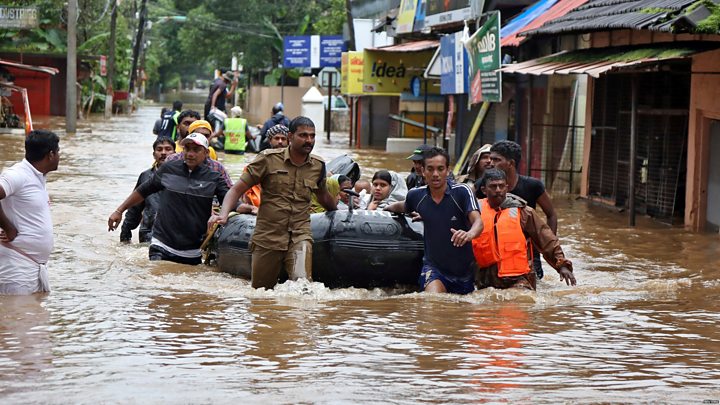
But many others remain stuck on trees and rooftops - NDTV says the number is in the thousands, but other news sites puts the figure in the hundreds.
According to The Times of India, at least 10,000 people are stranded in one village alone after all surrounding roads were submerged.
People who are stuck without electricity and supplies have been resorting to social media to appeal for help and say they have been unable to contact rescue services.
Krishna Jayan, 58, told the BBC she was at home sleeping when her friend woke her up.
"I opened the door and water gushed in," she said. "When we stepped into the street, we were neck-deep in water."
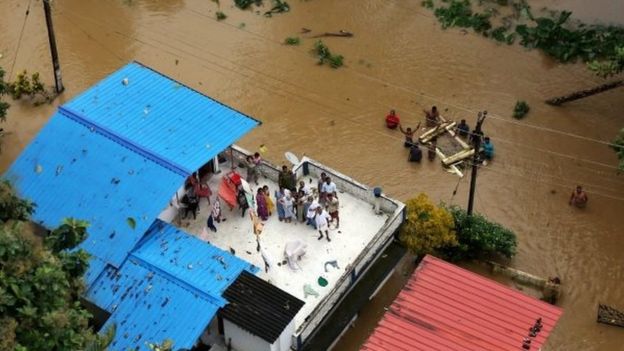 REUTERS
REUTERS
She said locals had tied ropes along the streets to help people walk through the water, allowing her and her friend to reach a bus to escape.
One heavily pregnant woman stranded by floods gave birth soon after being airlifted to safety, AFP reports.
Parts of Kerala's commercial capital, Cochin, are also under water, snarling up roads and leaving railways across the state impassable.
At the scene
Yogita Limaye, BBC News, Kerala
At Kuzhippuram, a town in the north of the state, the adjoining river breached its banks a week ago. Driving to a bridge over the river, for more than a kilometre on both sides of the road, houses are under water.
Only their rooftops are visible, and the tops of banana trees. The coconut trees that Kerala gets its name from, are tall, so they shoot up above the water.
People from the town were evacuated a few days ago, but a few of them have come back to see the state their homes are in. Some have swum to their houses, and are trying to salvage what they can. One man is sitting on the roof of his home, clutching on to a ceiling fan.
While floods have been the cause of most deaths in the state, heavy rainfall has also caused other disasters. In Malappuram, nine people were killed when a mudslide destroyed a single home. A large part of Kerala is hilly which makes rescue operations even harder.
What is being done?
Authorities say a total of 38 helicopters and 20 aircraft have been deployed and are helping to airlift emergency supplies to many areas.
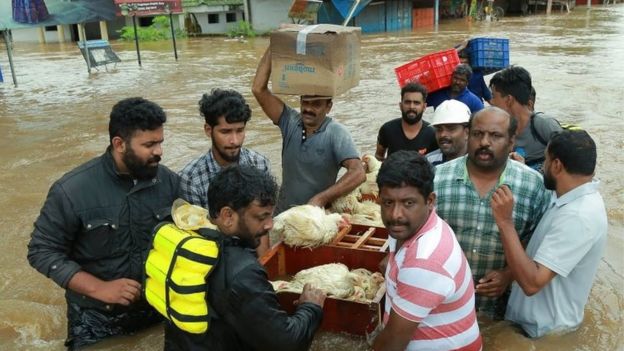 AFP
AFP
A special train that carries drinking water has also been sent to the state.
Prime Minister Modi flew to Cochin early on Saturday where he chaired a meeting of officials, before conducting an aerial survey of the worst affected areas.
The international airport there is closed because of flooding on the runway.

Anil Vasudevan, the head of the Kerala health disaster response wing, has said it is planning for the risk of water-borne diseases when the flooding recedes.
Why is the situation so bad?
Weeks of heavy monsoon rains triggered landslides and floods.
While it is normal for Kerala to get some of the country's highest rainfall during monsoon season, the India Meteorological Department said it had been hit with 37% more than usual because of a spell of low pressure over the region.
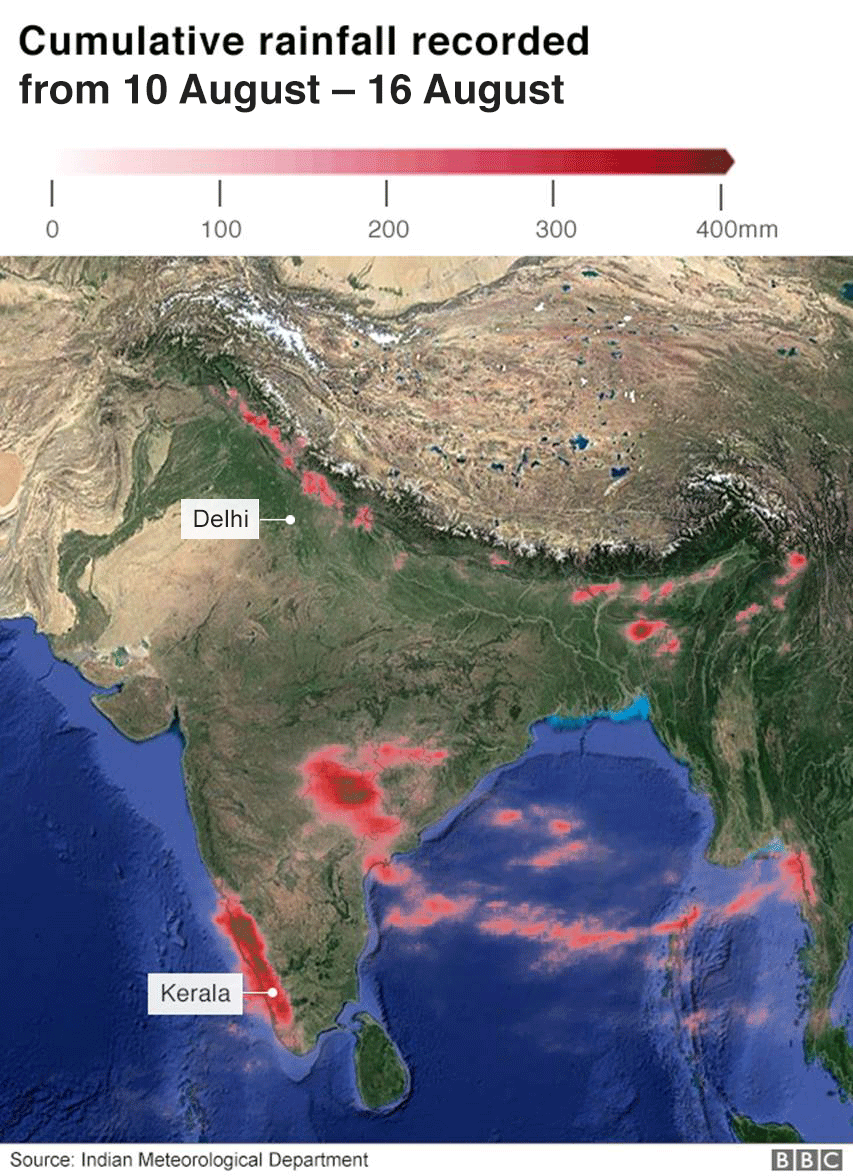

Environmental scientists are also blaming deforestation, especially the failure to protect ecologically fragile mountain ranges in the area, local media report.
Mr Vijayan, the region's chief minister, has said the situation in Kerala has been made worse by neighbouring governments.
Earlier this week, he and his counterpart in Tamil Nadu had a public spat over the release of water from a dam.
Kerala has 41 rivers flowing into the Arabian Sea, and 80 of its dams are now said to be open after being overwhelmed.
Are you in the flood affected areas in Kerala? If it is safe for you to do so, email your story to haveyoursay@bbc.co.uk.
Please include a contact number if you are willing to speak to a BBC journalist. You can also contact us in the following ways:
- WhatsApp: +44 7555 173285
- Send pictures/video to yourpics@bbc.co.uk
- Or Upload your pictures/video here
- Tweet: @BBC_HaveYourSay
- Send an SMS or MMS to 61124 (UK) or +44 7624 800 100 (international)
- Please read our terms & conditions and privacy policy
Or use the form below
India
Chopra and Jonas confirm engagement
- 18 August 2018
- Entertainment & Arts
India mourns former PM AB Vajpayee
- 17 August 2018
- India
Atal Behari Vajpayee: A mercurial moderate
- 16 August 2018
- India

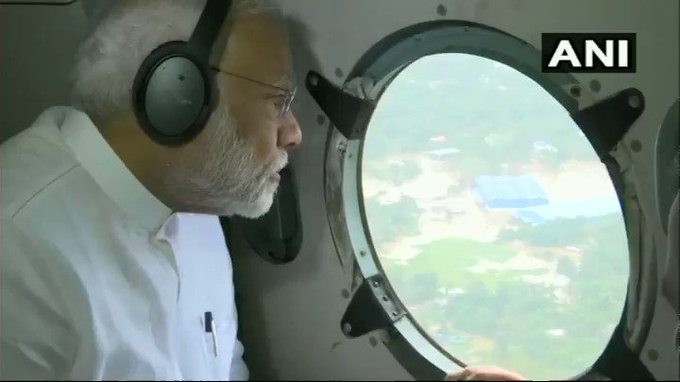

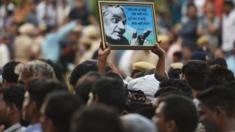


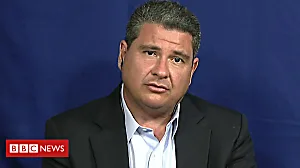
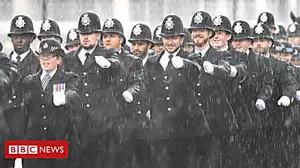



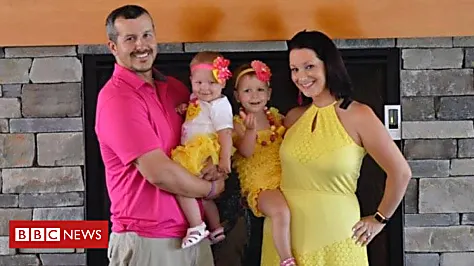

No comments:
Post a Comment